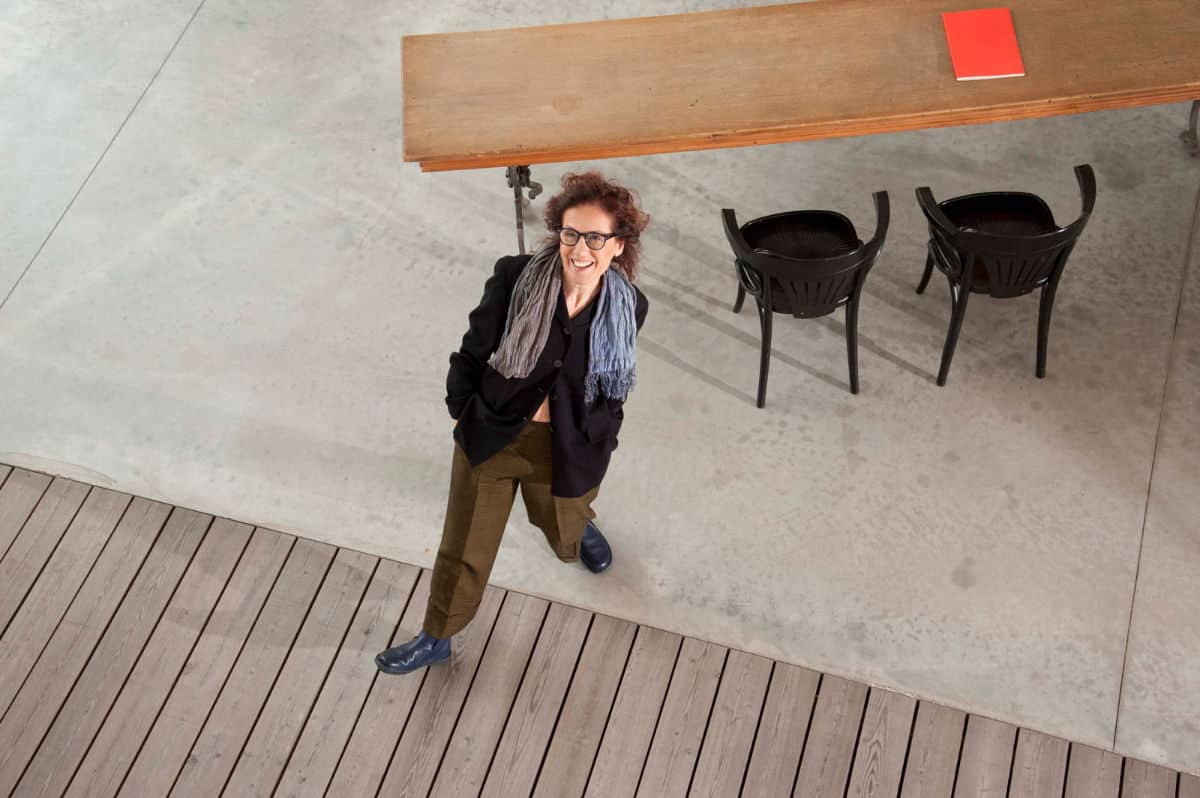Q&A: Rug Design in Architectural Projects with Deanna Comellini
An interview to G.T.DESIGN’s Creative Director on curating the textile element in interiors.

In its forty years of activity, G.T.DESIGN has shifted the perception of contemporary rugs from a simple accessory to an essential element in interior design. Creative Director Deanna Comellini, who works alongside architects and interior designers integrating her bespoke rugs in their projects, shares how she helps them fulfil their vision.
When you collaborate on an architectural project, how do you pick the essential information that will allow you to integrate the textile element?
Usually I try to develop the collaboration through dialogue and exchange with the other designers and professionals involved. Understanding the vision of the designer is important to bring a coherent and substantial contribution, that can elevate the original project. It is important to know how to look and read a project “through the lines”, but also know how to listen the words and the narrative of the project creator. Finally, the direct exchange with the final client, when it is possible, has always been proved important.
How do you transmit the vision of another designer through the rugs?
My research generally develops through the interaction, the imaginary and the emotions that are associated with the experience of various materials. The physical dimension of the object is as important as its relation in the interiors of the environment that surrounds it. Therefore, it is necessary to search for a coherence between the visions. In general the most important thing is to succeed in creating the right balance, finding elegance in even the most complex projects.
How does G.T.DESIGN personalize its rugs to fit a variety of surfaces, from residential and commercial projects to public areas, to private yachts?
Forty years of research across the board in the contemporary rug world and furnishing textiles guarantee our clients a unique attention and expertise. We have developed techniques that are highly performant and versatile to adapt the complexity of the project (for example, in regards to the production of special shapes and dimensions), as they combine advanced technologies, such as digital printing, with the of distinct quality of handmade and craftsmanship, two historical features of G.T.DESIGN.
How was the collaboration with Zaha Hadid studio on the One Thousand Museum project in Miami?
I always imagine the rug as a primary element of interiors. A big part of my project research was inspired by this concept. In One Thousand Museum, the rug is an important part of the project, in addition to floorings and fixtures. It gives great satisfaction to get to know the philosophy of one of the most influential figures in architecture of the past thirty years up close. I like to think that the idea of this “textile design” comes from a common sensibility, possibly predominantly feminine.
Our Fluid collection was used in several common areas in the ground floor and the sky lounge. The rugs, entirely built-in the flooring, are custom-made to reflect Zaha Hadid’s organic and futuristic interiors and furniture. A wave pattern is featured in the lobby and office rugs, while a geometrical theme is carried on the Sky Lounge areas, including the dining room and theatre spaces, mirroring the stunning exteriors of Hadid’s building. The black and grey tones of the rugs complement the ultramodern interiors, and are the perfect backdrop for Hadid’s white sculptural furniture in the lobby and the Sky Lounge’s breathtaking views. G.T.DESIGN also created the textile elements of the two model apartments using a curated selection of the brand’s signature rugs.
Could you share how you picked the rugs for the interiors of the model apartments of Renzo Piano’s 565 Broome street project in New York?
For this project, we selected rugs and textiles that match the austere palette and natural beauty of the materials of the building and its interiors, such as stone, white oak, glass and cement. Among the collections included in the living area and the bedrooms, we used the functional Paglietta, a blend of the ancient jute fiber with a glossy performing yarn, the soft and velvety surface of the thick wool weave combined with the lightness of bamboo of the Boom rug, and the flexible and resistant Textures style, made in pure virgin wool, featured in a gray and a metallic version. Stairs Lino rugs, with their natural shine of linen fibers that create elegant nuances of color, are used for the bathroom floors. The warm and understated tones of the rugs, such as a muddy brown color, ocher, and shades of gray, are complementary to the modern and welcoming interiors.
Which were the most fulfilling projects you worked on?
Sometimes even small residential projects can be very fulfilling; there is more dialogue with the final client, which is always very productive for designing an authentic vision of the space.
Having a direct relationship with the person that will live in the residence is an precious opportunity that gives you the possibility to get in depth in the planning process. Often this one-on-one relationship is very productive for both the designer and the client and they end up creating ideas together. When you can design a whole home there is something special. The outcome will be strongly personal, and I can attest that there no residential similar to another. In addition, it allows you to work well on a coherent vision and get creative on the complexity that one wants to achieve, playing with the rich collection of rugs that our know-how allows us to tailor for the project.
An architect that is not here anymore that you would have dreamed of working with?
There are so many among the masters, I have learned a lot from each one, but I would have loved to meet two in particular. Mies Van Der Rohe for his “less is more” vision, in fact I believe that elegance can be obtained “removing” rather than “adding”. I constantly practice his idea of a sought rather than imposed order in my work. And Carlo Scarpa, because I share his idea of a project where each element is essential and irreplaceable of a whole that makes it magical.
Finally, a golden rule to architects on how to find rugs for their interior projects.
My advice is to think of rugs as green areas in the interiors of a home – as places of comfort, leisure and healing, while using the vision of an urbanist. This new approach would extend the idea of the rug from a simple furnishing complement to an essential ‘area’ in the space, and the perception of the home from a delimited environment to a space conceived in its surrounding environment.


